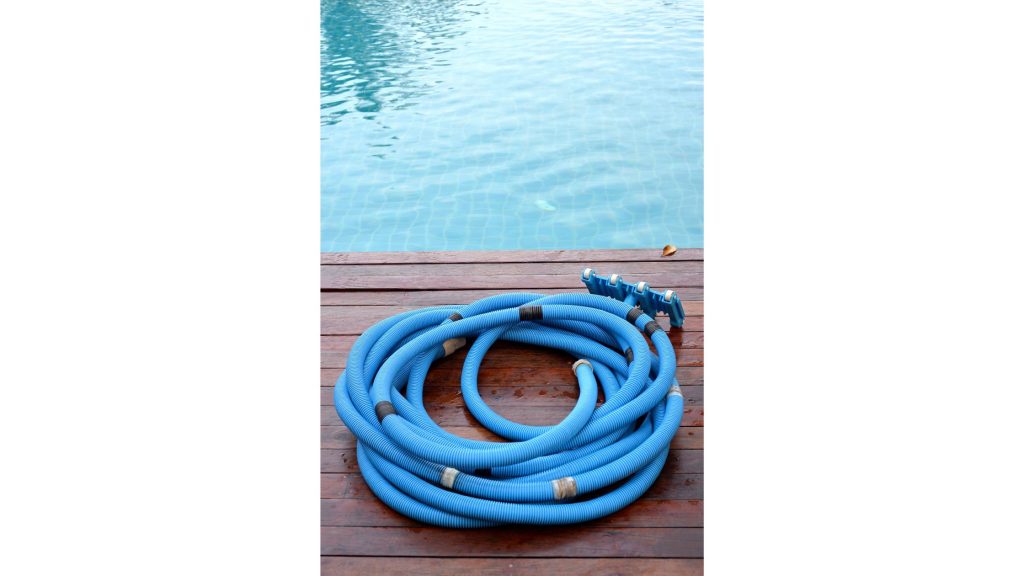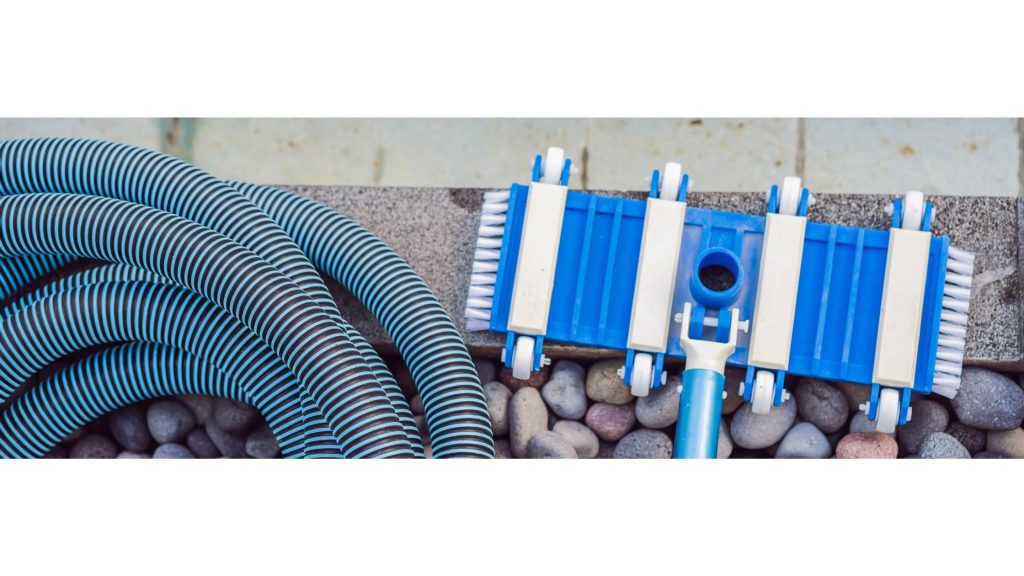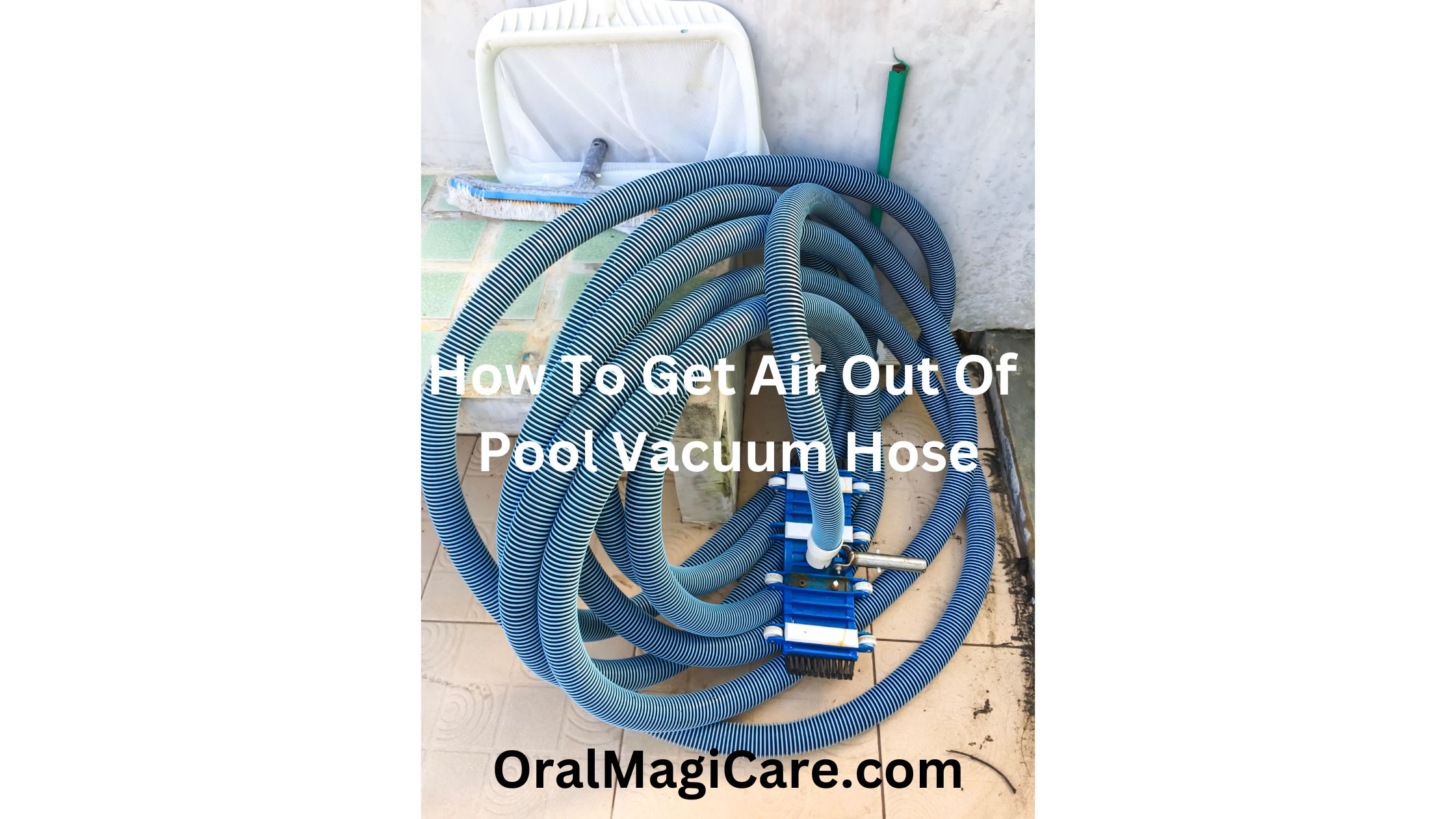Air inside a pool vacuum’s hose will evidently decrease the performance of the pool vacuum. It will take more hours to completely clean your entire pool. You’ll be getting lesser suction power for your pool vacuum and a lot of other difficulties.
That’s why you need to know how to get air out of pool vacuum hose. So, how exactly can you do it? We have included the reasons, the fixes, and troubleshoots of common issues you face during the fix. Let’s face it together.
Checking for leaks and kinks is truly crucial for this scenario. They are the most common reasons why air gets trapped in a hose.
Look out for those and also check if your hose is properly connected to the devices. You need to look out for hose kinks and leaks, and when you find them, you need to repair them properly.
You could also take precautions with some effective tools and equipment in order to save a large amount of time. And if you don’t know how to fix the problems you are facing, we got the troubleshooter for you.
Understanding the problem: Why Air Gets Trapped in the Hose
Common causes of air getting trapped in the hose
Before solving any problem, we always need to understand the reason behind it, right? We often solve half of the problems when we just know the reasons. So, what are the reasons behind air getting trapped in the vacuum hose?
· Hose kinks
Hose kinks are common when we free our vacuum hoses from a tangling loop. Not only do hose kinks cut off the supply of water through the hose, but also it traps air in there. It’s not something we can always control as we have to manage our hoses by rolling them up.
· Hose leaks
Hoses are properly built with materials that can keep the outside air out efficiently. But what happens when that material has a pothole and air has a passage to get into the hose? Hose leaks will be like that passageway for air to get into hoses without any difficulty.
Moreover, water will come out of the leak and you’ll face difficulties supplying the water through the hose.
· Improperly connected hoses
It’s almost the same as the hose leaks. If the outside air gets a passageway to the insides of the hose, it can interrupt the water supply. If you incorrectly connect your hoses with the main pump, main drain, pool vacuum, sand filter, etc., it will get access to the air that is eager to take place in your vacuum hose.
How trapped air can affect the vacuum’s performance
You might be wondering, what would possibly happen if my pool vacuum’s hoses are filled with air? There are consequences that will decrease the efficiency of your pool vacuuming. The most annoying issue is that you won’t be getting enough suction for your pool vacuum.
Then, air would already occupy spaces that are reserved for water. That means you will get a lesser amount of water to get a filter compared to air-free hoses. It will increase the time to clean your swimming pool.
A Step-by-Step guide on Remove Air from the Vacuum Hose

Alright, we already got to know why air is getting stuck in our vacuum hoses and also got a view of how it is affecting our pool vacuums’ effectiveness and performance. Now, let’s get into the main course of the entire meal which is explaining to you how to remove the air out of your hoses.
· Look out for hose kinks and untangle them after use
Remember when we said we could actually solve half of the problems if we knew what is causing them? We talked about hose kinks being a nuisance when it comes to cleaning the pool. So, we just need to troubleshoot this problem.
Kinks are visible when we untangle our hoses from coiling up. And if we just simply connect the hoses with certain devices the air will interrupt our work. Thus, we need to check if there are any hose kinks and if we find any, we have to straighten them up.
That’s all we need to do to fix the first problem. You can also keep the hoses untangled when you keep them after use. But that’s unconventional, so you like it or not, you should keep the hoses rolled up.
· Check for leaks and seal the leak when you find them
Our second reason for air getting trapped in the hose was hose leaks, right? Let’s fix this issue right up.
How can you spot a leak in a pool hose? Generally, you could just check the pool hose entirely. Another way is simply supplying water through the hose and you’ll notice water leakage, that’s where the gate to the hose for air has been created.
So, how can you fix this hindrance? Normally, you could just buy a new set of pool vacuum hoses online or from any swimming pool supplies store nearby. But if you want to demonstrate your creativity, you can use masking tape to seal the deal.
· Connect the hoses properly so they don’t come off
Well, it is not so difficult task to complete, yet one of the most significant ones. If could double-check every time you connect your hoses to any devices like a main pump, sand filter, pool vacuum, etc.
Even if you don’t notice any incompetence in your pool hoses, still you can confirm if you had connected your hoses properly to the devices.
Tips for preventing air from getting trapped in the hose in the future
It is not wise enough just to wait for the air to get into the hose and then fix it up. Sometimes, we need to take measures, so that we don’t need to get in trouble in the first place.
· Avoiding kinks in the hose
Is it possible to avoid kinks in the hose? Of course, it is. You could use a pool hose clipper to solve that problem easily. That way your hose won’t be getting kinks every time you roll them up. You need to know how to coil pool hoses perfectly.
If you don’t purchase a clipper, you could just coil them up in a proper circular form and store them somewhere safe. You could hang them, but hanging them often results in kinks. So, it’s better you don’t hang them anywhere, just place them in a place where there is no heavy object placed right above them.
· Regularly checking for leaks
Leaks are the most annoying issue in these sorts of scenarios. We generally can’t get rid of leaks as they tend to occur while we were careless with the hose, or for other reasons like that. What we can do is check for leaks frequently.
How frequently should we look for hose leaks? We don’t need to inspect them for like every 10 minutes or such. We just need to check them before and after we use them for cleaning our pools every time.
Why do we need to check them after using them? It is because most of the leaks are caused during the cleaning session. We should check for leaks even when we are coiing them up.
· Properly connecting hoses
It is the easiest measure you could ever take, right? Every time you connect or attach your hoses with the vacuum head or the main pump, you could make sure you have connected it well. That way you can keep the air out of the hose properly.
Sometimes, your pool vacuum hose keeps coming off skimmer, in that case, you could use masking tape or temporary glue to keep the hose attached to the device. If that didn’t help, you could ask for help from swimming pool services.
You should also know how to hook up hoses for above ground pool perfectly. That way they won’t come off easily.
Safety precautions
To keep any object out of harm’s way, we always need to take some safety precautions. One effective way to seal the head of the pool hose for good is using a cap to seal it from both ends. They don’t require to be specific swimming pool caps. Any caps can do the magic and you can get them from anywhere online and offline.
You can seal the head off after using the hoses for cleaning the pool and then open it up when you are going to use it. Another way to keep the air out is wrapping the hoses. Although, it’s quite bothersome as you need to put in unnecessary effort just to keep the air out.
Plastic wraps will go fine with these hoses. You can find them cheaper at any retail shop nearby. Or you could order a bunch of them online. You can also store the hoses in a bag. But if the bag isn’t big enough, your hoses will get kinks.
To ultimately get rid of hoses, you can purchase a cordless pool vacuum. For that, you should definitely check out what is the best cordless pool vacuum out there.
Additional tools and equipment that might be needed
We already talked about some of the tools and equipment beforehand. Let’s just pile them up together and also add some fresh ones that would help you greatly with the hoses.
· Swimming pool clamps or clips
In general, you can use those clips to roll up and gather your pool hoses so that they don’t get tangled. Tangled hoses can result to hose kinks. So, we kind of in need of those clips. And you won’t be needing pool clips specifically. You can use any clips that are large enough to manage your hoses.
· Hose head shutting caps
We need them for blocking the outside air for good. It is a great way to get rid of this issue once and for all. Still, you need to make sure whether your hose has kinks, leaks, etc. and make sure they are connected properly.
· Plastic wraps
Plastic wraps can be used to completely seal the hoses. Or else, you could also use it for only sealing the heads of the hose. We would suggest you to try to wrap it entirely, though it is a bit of stretch to cover the entire hose.
Troubleshooting Common Problems

It doesn’t matter whether it’s an above-ground pool or an in-ground pool, some specific problems with the pool vacuum hoses are constant. Here are some of the problems and their solutions to help you.
Common problems that can occur when trying to remove air from the hose
No matter how perfectly we do complete a task, it is never perfect. And there are some issues that get out of bounds for most people. Those are the common problems. Some problems occur rarely, only customer services and pool services are able to solve those cases.
So, let’s see what problems people commonly run into while trying to get rid of air from their hoses.
· Hose won’t prime
Hose priming could be the most evident way to remove air from the hoses. But what will happen if you are getting into trouble while priming your hose?
The common reasons a hose is unable to prime is that there is way too much air in the water system. Or it could be that the pool doesn’t have enough water. Leaks are the main cause of this. If there are too many leaks or way bigger leaks, a lot of air will get in, making the hose incapable of priming.
· Vacuum loses suction
While evacuating air from the hose, your vacuum might lose suction pretty often. Don’t worry it’s a common occurrence. But why does this happen?
Sometimes pool vacuum’s filtration bag gets filled or piled up. As a result, the vacuum starts to lose suction. And other times, there is a blockage in the hose that creates a blockage to suction also.
Solutions for these problems
Now that we know what are the problems most people are facing and what are causing them, let’s find out how to fix them.
· Checking for kinks and leaks in the hose
Kinks and leaks are responsible for making the hose incapable of priming. To get rid of air from the hose, we need to prime our hoses. So, if we spot any kinks, we need to straighten them up. And if we notice any leaks in the hose, we need to repair them as soon as possible. Otherwise, we cannot use that hose to clean our pool.
· Checking the vacuum’s filter and bag
If your vacuum’s filtration system and filter bag get filled up, your vacuum will most likely lose suction. This suction loss will be a hindrance to removing air our of the hose. So, you need to monitor if your vacuum filter and the bag have been clogged or not.
· Checking for blockages in the hose
Blockage is also responsible for the vacuum’s suction loss. To prevent this from happening, you need to check your hose to see if any debris has clogged up there and if you spot any, quickly remove them from there.
Suction-side pool vacuums have a reputation for clogging up here and there, especially the Kreepy Krauly for some reasons.
Conclusion
Here, we almost covered every possible matter you have to look out for while removing air from the hose. The reasons for air getting trapped inside a hose are crucial to fixing all the issues caused by it. After that, we included every possible way you could fix the problems.
We also included some problems people generally run into while removing air out of their hoses. If you take our advice instead of going to a pool expert, we would suggest that you should always take precautions before the air gets in the hose. The tools we have included could be very handy while facing this problem.
And if you run into any pool-related problems like how to siphon water from a pool with a hose, you could contact us.
Read more, learn more:
Can you put shock in the pool skimmer?
How to lower bromine in pool?
How do pool lights work?
